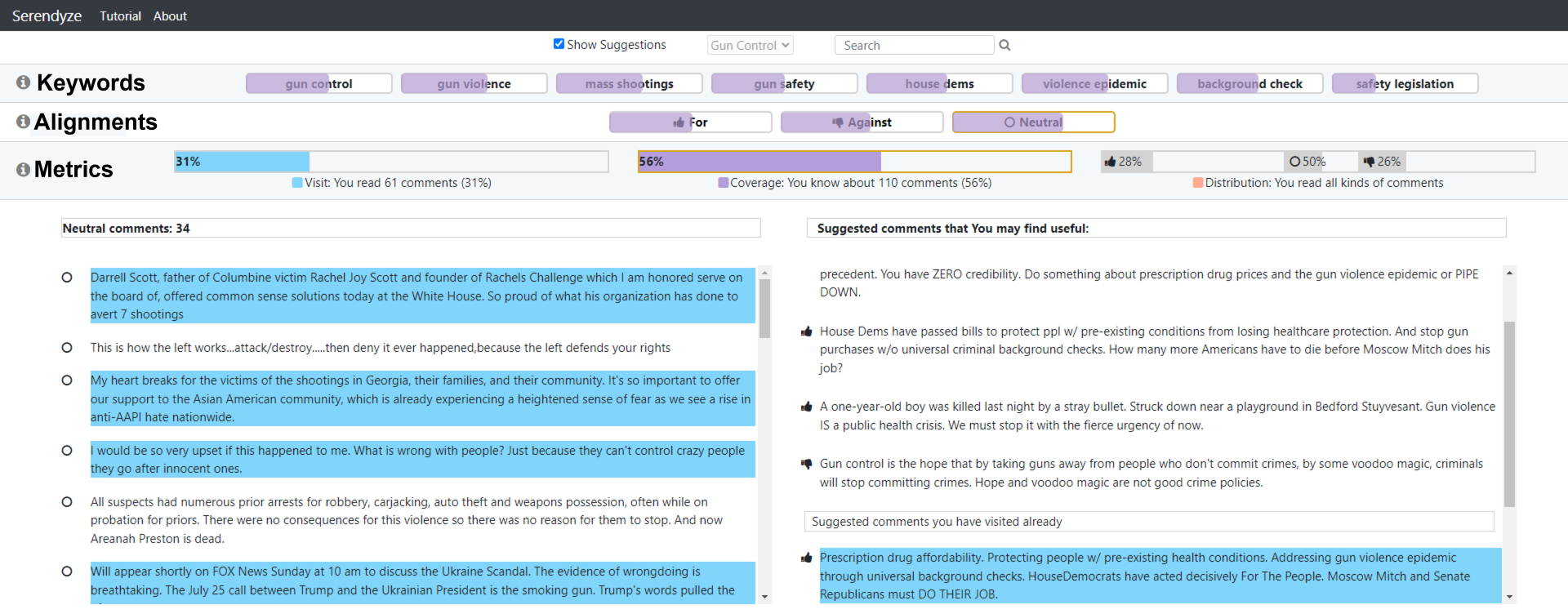Bridging the Divide: Promoting Serendipitous Discovery of Opposing Viewpoints with Visual Analytics in Social Media
Mahmood Jasim, Mumtaz Fatima, Sagarika Ramesh Sonni, Narges Mahyar
Room: 105
2023-10-22T22:00:00ZGMT-0600Change your timezone on the schedule page
2023-10-22T22:00:00Z

Abstract
hile social media promises open access to information, prior works suggest that it also plays a role as a catalyst for the social divide, which is often attributed to a shift towards algorithmic content curation based on users' digital footprints. To combat this issue, methods that support serendipity has received attention in recent years that aim to provide information beyond a user's viewpoint or preference. However, the utility of systems that promote serendipity in raising awareness of opposing viewpoints remains underexplored, especially in the political context. To that end, we conducted a study where we asked 14 participants to explore tweets about two politically charged topics --- gun control and immigration --- using an interaction-driven visual analytics tool that visualizes users' exploration patterns and provides serendipitous suggestions from opposing viewpoints. We found that as participants explored the tweets, they gradually became aware of opposing viewpoints and identified information they did not consider before which helped them gain knowledge about arguments from all sides. We also found while people were keen to use technology that promotes serendipity to cover more topical information, they do not necessarily trust the information found on social media. We hope that our work will motivate future researchers to investigate serendipitous aspects in visualizations to promote a more holistic exploration of various viewpoints.